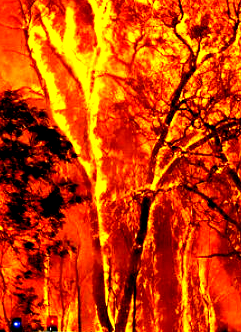High-tech fire suits tested
 An Australian government body is working on the firefighting uniform of the future.
An Australian government body is working on the firefighting uniform of the future.
The Australian Nuclear Science and Technology Organisation (ANSTO) is working with the University of NSW on an ultra-light fireproof material for use in firefighting gear and high-tech fire protection.
The material should be able to protect household items with a simple coating, and is on the verge of commercialisation. It involves an inorganic compound made from a metal carbide using an atomic process refined at ANSTO’s Lucas Heights nuclear reactor.
It is designed to replace traditional firefighting suits, which are made of heavy carbon compounds, contributing to fatigue and dehydration.
It is so thin that it could be applied to almost anything, from household devices to furniture.
“The thickness of the material, you’re talking about two to three nanometres,” says lead researcher Professor Guan Heng Yeoh.
“The weight gain is only 5 per cent, but we are getting a maximum fire reduction of 50 to 70 per cent.”
ANSTO’s Centre for Neutron Scattering has been crucial to the development of the fire-proof skin, using a special instrument called the Bilby small-angle neutron scatterer to bombard the neutrons in a two-dimensional metal carbide compound called an MXene.
This device has allowed the researchers to study in detail the atomic and molecular structure of the material - which comes from a mixture of aluminium, titanium and carbon.
“When we remove the aluminium, what remains are actually layers of titanium carbide in its raw form,” Professor Yeoh said.
The nano-sheets are then layered with bio-based or flame retardants extracted from natural materials like shrimp or oyster shells.
“We can mix it together and apply it to furniture. We tested it with polyurethane foams which are commonly used in beds,” says UNSW’s Dr Anthony Chun Yin Yuen.
“It not only reduces the flame significantly because the foam is highly flammable itself but [when] burning it reduces the smoke and toxicity release, which has always been a problem.”
The research team says they will be able to produce a uniquely Australian style of fire uniform tailored for the extreme heat of the Australian summer.
“There’s been no need for innovation in fire-retardant compounds in cold weather climates like Europe, but in Australia, simply wearing existing fire suits in our 40-degree summers can be a hazard,” the group said.
They are now working to scale up and commercialise the invention.
Dr Yuen said research is required to cut down the lengthy chemical process required to etch out the aluminium from the MXene.







 Print
Print